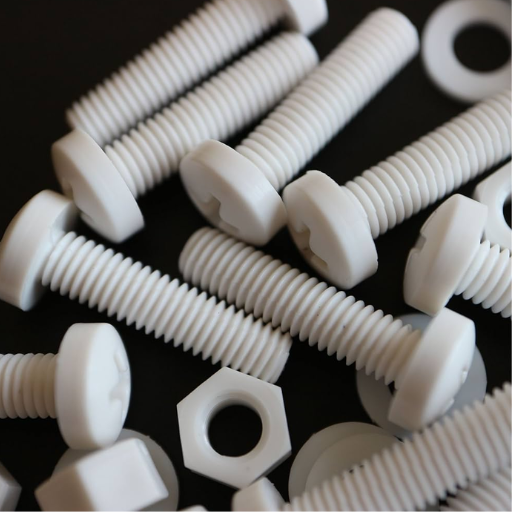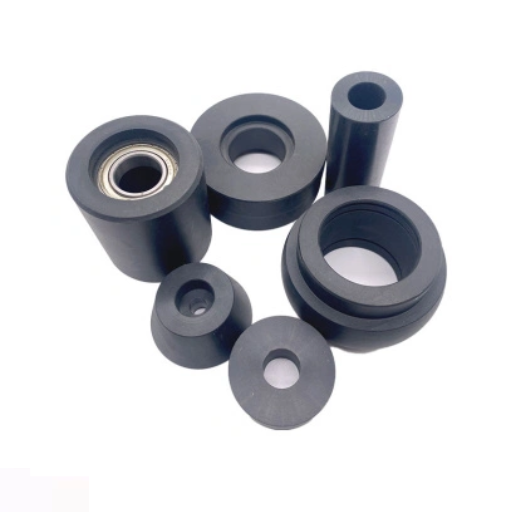Welcome to our straightforward instructions on using Loctite Super Glue! This comprehensive and helpful document will focus on Loctite Super Glue, starting with some of its qualities, developed formulas, and properties, which endow it with splendid superiority. Whether you are a professional craftsman or a hobbyist DIY, this guide is meant to cater to all your interests and help you make the most of this adhesive art.
This document seeks to answer numerous questions, such as how Loctite Super Glue works. Why is it able to dry so quickly? How is it different from super glues? In particular, using Loctite Gel Super Glue, which has a patented gel setting formula, dramatically improves the gluing efficiency. It makes the application rather precise and often quicker than regular super adhesives.
One of the main questions we will address is whether the use of Loctite Super Glue on plastics is valid, focusing on other types of plastic loctite super glue can stick to, including polycarbonate, PVC, silicone, and polystyrene, all of which are accepted. You will also be educated on its usability on dry and moist surfaces.
As with any bonding agent, super glue comes with its set of safety standards, and for that reason, we have set aside a section for you where we focus on the specifics regarding handling Loctite Super Glue, preventing skin adhesion from the glue and then discussing the glue adhesives from a safeness point of view.
Last, we shall guide you in using this superglue to perform repair work and undertake various projects easily, which is not possible with standard superglues.
Oh, and we are about to take up this fantastic journey together. So, get ready to unleash the superpowers of Loctite Super Glue!https://bearing-mechanicalparts.com/blog/loctite-super-glue-drying-time/
How Does Loctite Super Glue Work?
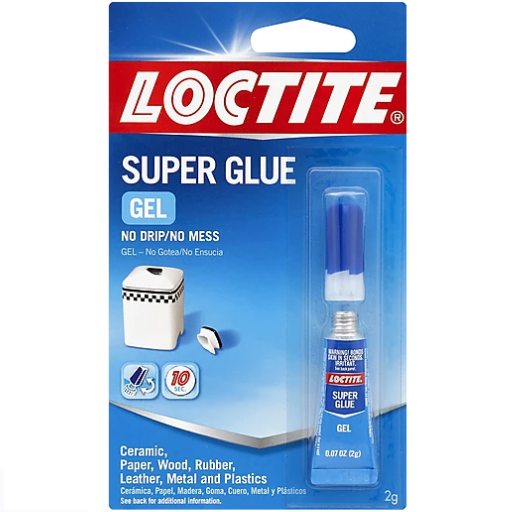
How Does Loctite Super Glue Work
Loctite Super Glue has adopted state-of-the-art cyanoacrylate adhesive technology to increase bonding strength and quick drying capabilities. The adhesive functions by contacting air or minute moisture in surfaces and triggering a chemical reaction. This reaction causes the cyanoacrylate molecules to polymerize appreciably, resulting in the interlocking of the surfaces being bonded. The quick-drying technology conceivably allows the bonding to set after a short period, making it suitable for a wide range of applications.
Understanding Cyanoacrylate Adhesives
Being an expert specifically on adhesives, I can explain how cyanoacrylate adhesives, or more commonly, superglues such as Loctite Super Glue, work. Loctite Super Glue and other cyanoacrylate glues are easy to use as they have superb bonding and fast-drying properties. The following is a summary of how cyanoacrylates function:
- Chemical Reaction: Cyanoacrylate methyl ester, once in contact with moisture, including air moisture or even damp surfaces, starts a chemical reaction, one of the features of moisture cure.
- Rapid Polymerization: This reaction causes the cyanoacrylate molecules to polymerize, effectively bonding the surfaces they contact rapidly.
- Quick-Dry Time: Its powerful composition allows the glue to dry quickly, which enables a strong and stubborn bond formation.
Loctite superglue enhances cyanoacrylate technology by providing the required strength and adhesion for various repairs and projects.
The Science Behind Quick Dry Time
The quick-drying nature of cyanoacrylate adhesives, such as Loctite Super Glue, can be attributed to its particular chemical construction and chemical reactions. When exposed even to a minimal amount of moisture, the cyanoacrylate adhesives undergo polymerization, which helps create a strong bond between the surfaces. The following factors contribute to the quick dry time:
- Cyanoacrylate Reactivity: Cyanoacrylate adhesives contain polymerized cyanoacrylate monomers that react upon polymerization and moisture inclusion. Hence, this allows the adhesive to bond surfaces together quickly.
- Moisture Activation: Any moisture from the environment or on the bonded surfaces sidesteps the need for excessive heating of the adhesive bond, accelerating the adhesive’s polymerization reaction. This serves as an elixir to start the adhesive’s cross-linking and assist in quicker dry times.
- Surface Preparation: Strong stress concentration tends to occur in the bonded area. Proper cleaning, drying, and activities in the bonded area are needed to rectify this potential flaw. These measures ensure the courses of action are strictly geometric.
Technical Parameters:
- Polymerization Reaction: Wherever moisture is present, the cyanoacrylate monomer can undergo polymerization through an Anionic polymerization reaction.
- Bond strength: Finally, the polymerized cyanoacrylate adhesives are left with great tangential force, and thus, the bond appears strong.
- Cure Speed: Moisture triggers a fast curing and bonding process on cyanoacrylate adhesives due to the rapid polymerization.
- Viscosity: Cyanoacrylate adhesives are low-viscous, so they quickly spread, penetrate the cracks, and form a strong bond.
Once you understand the science behind the fast-curing mechanism of cyanoacrylate adhesives, you won’t need to doubt the strength and rapid bonding capabilities of Loctite Super Glue for repairs and project work.
Compared to Ordinary Super Glues
All super glues, in general, are replaceable, but Loctite Super Glue is a notch better because of many suitable technical parameters and performance features. It does not need to be mixed with anionic polymerization reaction, just a turn to water does the job guaranteeing bonding all in a matter of seconds. The best sleeve of Loctite Super Glue makes its use over a wide range of applications without gripping or shaking. It saves time and provides better efficiency because it reaches up to level fast. Moreover, a particularly low viscosity of the Loctite Super Glue ensures simple usage, application, and penetration into gaps, ensuring the best bonding. When working on demanding projects/repairs, trust Loctite Super Glue to get better results.https://bearing-mechanicalparts.com/loctite-glue/
What Makes Loctite Gel Super Glue Unique?
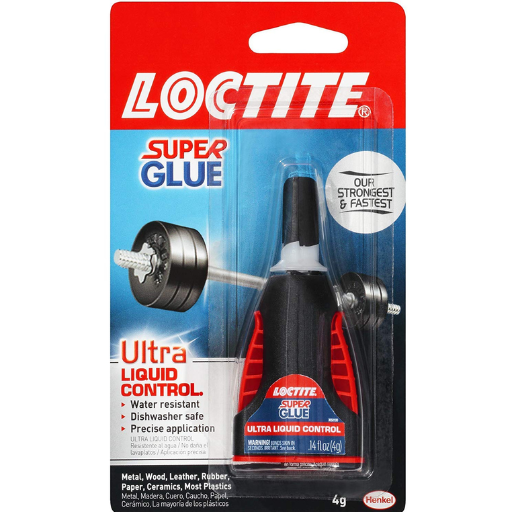
What Makes Loctite Gel Super Glue Unique
Loctite Gel Super Glue stands out from all the other marketed adhesives by the very nature of its makeup and other features that it has to offer. Here is why Loctite Gel Super Glue stands out:
- Aino gels like a proper glue. Loctite Gel Super Glue does not thicken or clump like most Super Glues, making the application process considerably more ‘controlled’ and offsetting the chances of mess stains.
- Also known as a no-run control, Loctite Gel Super Glue will not awkwardly slide off your intended target. Thus, it can stick to vertical surfaces or attach body tissues without ‘running’ off. This, in turn, allows the user to apply the glue more efficiently without compromising efficiency.
- Superglue is an effective solution for fusing metal, plastic, rubber, ceramics, and other materials, creating a powerful, permanent bond.
- The gel formula allows the user to rapidly approach and accurately position the components before a complete bond sets.
- The Loctite Gel Super Glue improves impact and shock resistance and suits applications requiring strong materials.
With these features, Loctite Gel Super Glue would serve as an industry standard for long-lasting and reliable superglue. Next time you apply adhesive on a project, choose Loctite Gel Super Glue for a firmer placement.
Innovative Gel Formula Sets Without Drip
Having worked with adhesives for several years, I can elaborate on the unique feature of the Loctite Gel Super Glue, which has a unique formulation. This particular adhesive does not allow the gel to drip, hence easy and clean use. It is also slightly different than its traditional exposure, as the gel-like texture makes it easier for the user to mold and adhere to the glue the way they want to without it hardening too fast. The Loctite Gel Super Glue can also be held by natural gel composition without being too runny- therefore, it can be used on surfaces that stick upwards or porous materials. This outstanding glue can attach various materials, such as metals, plastic, rubber, ceramic, etc., and the bond can withstand much force. It surprised me at least how much impact and shock resistance the glue has, therefore strong and durable products can be easily manufactured. Loctite Gel Super Glue will undoubtedly help with all necessary projects, whether for differing repairs or simple projects requiring adhered bonds.
Achieving Maximum Control for Precise Application
When combining any adhesive product, it’s essential to achieve maximum control over the bond for accurate application. Loctite Gel Super Glue is easy to perfectly control and apply because it comes in a gel formulation that has a unique property. Clumping doesn’t happen with the gel liquid, which helps the bonding agent be used efficiently. Because of its flexible configuring window, we can place components more optimally before glue curing. Due to this property allows it to remain in place, It can even be used when bonding porous materials or on vertical surfaces. Metal, plastic, rubber, ceramic and many more materials can be glued seamlessly thanks to the use of Loctite Gel Super Glue, This super glue can even withstand shoots or knocks due its strong properties and durability.
Before using Loctite Gel Super Glue, you must consider the following parameters.
- Viscosity: The gel-like texture of Loctite Gel Super Glue prevents dripping and incomplete application, enabling controlled application.
- Working Time: Due to the extended working time, things can be placed in a way that allows for the best glue configuration before it completely dries.
- Bond Strength: Loctite Gel Super Glue ensures that a strong and durable bond is made so the bond remains intact with various materials.
- Versatility: This adhesive can be used on metal, plastic, rubber, ceramic, and many other materials.
- Impact and Shock Resistance: The Glue is High Grade and withstands violent impacts and abrupt pressures, allowing the applications to be extreme.
Inserting Loctite Gel Super Glue in an application has a supreme impact, allowing maximum control over aspects that would otherwise make a repair difficult.
Can Loctite Super Glue Be Used on Plastic?
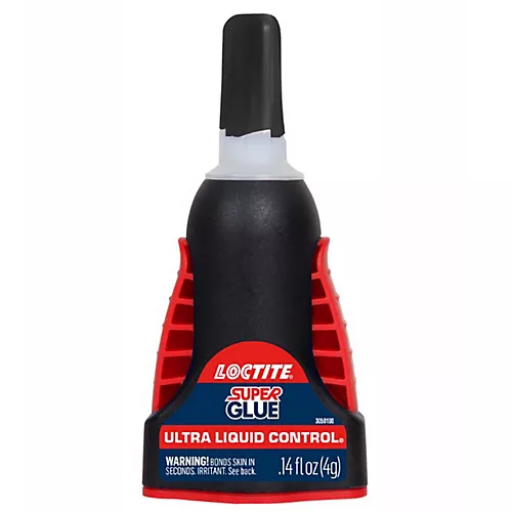
Can Loctite Super Glue Be Used on Plastic
Loctite Gel Super Glue is an excellent option for bonding plastic materials together. It can easily bind numerous materials, especially plastic, making it perfect for various uses and repairs. The gel’s consistency also guarantees maximum control over the glue to ensure no dripping occurs; this allows you to utilize the glue exactly how you want it to. Also, the Loctite Gel Super Glue remains resistant to impact and shock, further ensuring its usefulness under harsh conditions. No doubts should stay in mind; you can apply Loctite Gel Super Glue for your plastic bonding applications.
Adhesion on Polycarbonate and PVC
Being an expert in adhesive solutions, I can state that Loctite Gel Super Glue has excellent bonding characteristics with polycarbonate and PVC materials. The gel form of the adhesive aids in controlling the flow and prevents dripping, enabling application on polycarbonate and PVC surfaces very accurately without spillage. Because of its high-end formulation, Loctite Gel Super Glue guarantees quick, reliable, and durability-enhancing adhesion even in hard-to-reach areas. If you are looking for perfect bonding on either polycarbonate or PVC materials, trust Loctite Gel Super Glue.
Suitable for a Variety of Porous and Non-Porous Surfaces
Loctite Gel Super Glue is an excellent adhesive for both porous and non-porous surfaces. Loctite Gel Super Glue is designed to bond highly and reliably on different materials. It has been specifically engineered to be ideal for bonding both porous and non-porous surfaces, whether wood, metal, or plastic. Loctite Gel Super Glue is the perfect bonding agent for various applications.
What Are the Safety Precautions When Using Loctite Super Glue?

What Are the Safety Precautions When Using Loctite Super Glue
Several measures need to be taken to apply Loctite Super Glue efficiently and in the safest way possible. The following are some recommendations that can assist you in ensuring safety:
- Use in a Well-Ventilated Area: If the area where the work is being done does not have good ventilation, a mask, gloves, and goggles can be used.
- Avoid Skin Contact: It is always better to avoid contact with skin, even if it seems complicated. In case of any contact, the area must be soaked with warm, soapy water. Forcefully removing skin that has bonded together should never be attempted because it can lead to injuries.
- Keep Out of Reach of Children: Loctite Super Glue should be kept away from children and pets and out of their reach. Consumption or inhalation should also be avoided.
- Avoid Eye Contact: If it is unavoidable and the eye comes in contact with the super glue, remove contact lenses if any, then rinse gently with water. This should be done for at least 15 minutes while simultaneously getting medical help.
- Proper Application: Every manufacturer offers instructions that must be followed for better results. Only a required amount of glue should be used as too much only causes a loss of strength.
Following the above instructions will make using Loctite Super Glue much safer. Taking the above measures has also significantly reduced the chances of an accident.
Handling Cyanoacrylate Super Glue
It is essential to take care of it while applying Cyanoacrylate Super Glue. Remember the following points:
- Abide by the Manufacturer’s Guidelines: Always use a highly ventilated room; otherwise, wear cudgel masks and gloves. This reduces the concentration of the fumes.
- Wear a Mask, Goggles, And Gloves: When using the cyanoacrylate, it should be noted that this glue attaches itself rapidly to the skin. If this happens, please exercise caution. Take sweat, warm water, and a mild detergent. Working around this area in a rush can cause injury as it damages a person’s skin.
- Restrict Eye Contact: Do not touch the glue if skin contact occurs. Like before, fiberglass and skin mesh to a certain point; it’s best not to yank it across, as that would ruin the injury.
- Put the Glue Away: Store the glue away from pets and children so it does not mislead them.
- Practice Responsible Storage: When applying the glue, use the minimum volume required; otherwise, eye contact will occur, which is dangerous! Also, wash the areas around the eye sockets after using the glue, as this area is susceptible to damage.
Remember that the different aspects of cyanoacrylate superglue, like drying time, bond strength, and temperature resistance, change with the formulation of the products used. For greater detail concerning these aspects, it is best to refer to the product’s packaging or any additional guidelines provided by the manufacturer.
Preventing Accidental Skin Adhesion
It is imperative that any accidental bonding of skin or body parts due to Cyanoacrylate Super Glue is avoided to enhance user safety. Some of the instructions that you should consider are:
- Avoid Skin Contact: Ice packs or special gloves should be applied to handle skin that comes in contact with the glue. Use tweezers or an applicator to make sure you stay safe.
- Remove Dust and Dirt: All the areas that the glue will be used on should be thoroughly cleaned with water to remove any oils and dirt particles to make sure the bond formed is strong, and there is no chance of a skin bonding incident taking place.
- Focus on Direct Application: Use the aforementioned ice packs and gloves to avoid using up the bond altogether, as contact with skin should be avoided. Instead, use bread pieces to apply the right amount of bonding glue to create a perfect mix.
- Use Double tape: To ensure care and safety, no direct skin contact should be made when using the work. In case of a shocking incident involving skin contact, washing hands with soap and lukewarm water is an excellent option, as rinsing helplessly will not work. Also, make sure not to rip apart any parts that have been glued together.
- Seek medical help: Avoid doing that; pressing the skin together to rip it apart will cause the skin to get even more damaged. Always consult a doctor after confirming damage.
I want to complement a few features of CYANOACRYLATE adhesive, as it is essential that sticks always be stored in a cool and dry place. Keep them out of the reach of children and avoid areas with high salt content or extreme humidity so that bond strength isn’t affected or the product is not ruined. Be certain never to apply too much force while reacting two parts as injected materials tend to expand throughout the textile.
If effective operators follow the directions mentioned above entirely, the chances of getting skin glued with the adhesive material are pointless.
Proper Storage of Documents and Downloads for Safety
Since I believe in fierce governance regarding storage and safety measures, it is essential to point out that Cyanoacrylate Super Glue should be kept in a secure container in a dry environment, away from sunlight and high temperatures. The container should be tightly wrapped to prevent moisture absorption. It is also prudent to place it in an inaccessible area to children or animals to avoid accidental consumption or use of the product.
Please read the product’s label and instructions to avoid misunderstandings and mistakes. Always follow the guidelines to ensure that the product is handled safely. All such documents explain suitable usage, hazards if misused, and measures to take in case of an emergency. Knowing such information is vital to minimizing risks while using the product correctly and ensuring safety.
This documentation also includes safety resources along with additional materials for guidelines regarding your subject under consideration and their proper use, self-protection during a workplace setting, or narrowing down risks revolving around manageable hazards, myths, and hazards along with them. Sacrificing storage practices to ensure safety is in our best interest is worth remembering, as well as all the measures to provide a safe working environment.
How to Achieve Optimal Results with Loctite Super Glue?
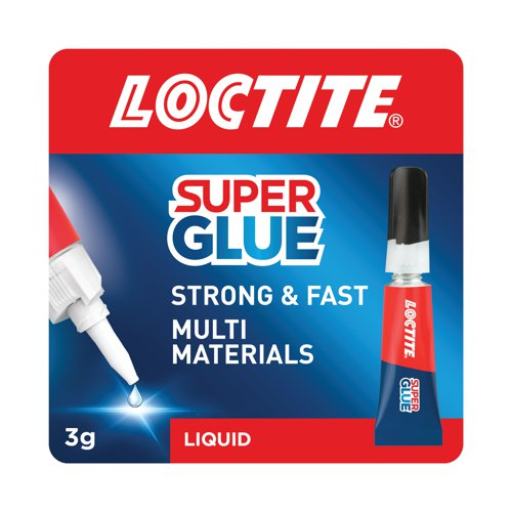
How to Achieve Optimal Results with Loctite Super Glue
If you want the best results with Loctite Super Glue, you need to adhere to the following requirements:
- Surface Preparation: Obscure any dirt, dust, and grease particles on the surfaces to be joined together. You can use clean lint fabrics or alcohol wipes to remove them.
- Apply the Right Amount: Use a minimal amount of Loctite Super Glue on one of the surfaces. Otherwise, you will use too much glue, leading to poor bonding and excessive glue overflow. And remember, a drop goes a long way.`
- Joining the Surfaces: Line up the edges before gluing them together. Then, glue them together, but don’t be hasty. Use steady pressure for a couple of seconds to let the glue stick. Because the edges are glued together, avoid twisting or changing the joint until the glue dries.
- Curing Time: Loctite Super Glue fully cures in a few minutes. However, maximum strength only starts developing 24 hours after the surfaces are bonded, so letting the joint sit for a while is advisable.
- Storage and Safety: This glue should be a safety hazard for children; close the lid of the glue container tightly to preserve the glue for later use. Store the glue away from direct piping sunlight and extreme heat. Availability to children and pets is strictly a no as the risk of either one consuming/destroying the glue is unnecessary.
Looking forward, examine how to apply the glue first and read the instructions. The glue producer provides essential details about how to use the glue safely and gently handle it so no glitches are run off in the keyboard replacement.
Ensuring Superior Performance Over Ordinary Super Glues
A priority for us is to develop better functionality than regular super glues. Therefore, we have consciously created Loctite Super Glue to perform bonding with different materials better. Our product relies on the competition in the following aspects:
- New Technology: Our super glue is made with a unique glue blend that will offer maximum holding potency, strength, and impact resistance, even in the harshest conditions for a long time.
- Quick Set: We all know time is crucial, and Loctite Super Glue sets in rapidly. Its ability to set up fast enables rapid bonding for manufacturing processes and reduces waiting time. The glue begins curing quickly and gains instant strength and bonds in about 24 hours.
- Colossal Range: Super glues have long been notorious for their poor adhesion capabilities. However, our super glue is okay with several substrates, including plastics, rubber, metal, ceramics, etc. Thus, it is helpful for everything from everyday repairs to construction work.
- Controlled Accuracy: Gluing surfaces together should not be challenging, but it can be with harder edges and details. Our product has a precision applicator that helps dispense the necessary amount of glue in the right spot for optimal bonding.
- Quality Adhesion: No matter what environment or surface you apply Loctite Super Glue on, its qualities are remarkable regarding adhesive strength against moisture, chemicals, and, most importantly, heat.
With Loctite Super Glue, you can be assured we have a product that is better than the usual super glues in respect to strength, reliability, versatility, and ease of use. Get the results that professionals and hobbyists use for their bonding needs.
Techniques for Seamless Repairs Without Clamping
As a professional in clamp-less repairs, I can provide you with pointers and techniques for achieving perfect results.
- Surface Preparation—Before applying the super glue, ensure that the surfaces glued together are clean, dry, and free from dust, oil, or contaminants. This will strengthen the adhesive’s bonding strength.
- Apply the Right Amount—Great precision is required when dealing with Loctite Super Glue. Apply the glue in a thin and even layer on one surface only. It is always a good idea to note that the less money used, the more efficient the result.
- Press and Hold: After putting the surfaces together, apply controlled pressure for a few seconds to assist in the initial bond formation. This ensures that proper contact is made for adhesion.
- Curing Time—It is essential to allow the glue to dry completely. The amount of time required to seal could be impacted by temperature and various factors regarding the material type. For guidelines on drying time, it is advisable to refer to the instructions or labels a product came with.
- Put Less Stress on the Joint—If the initial bond is solid, do not try to apply more stress or load than is needed. Where reasonable, keep the repair under these load conditions until the curing is over. This will greatly enhance the quality of the bond.
Specific parameters might differ due to factors such as the materials to be repaired and the Loctite Super Glue product category used. It is essential to refer to the product data-sheet and instructions on the most compatible substrates, time and temperature requirements, and other pertinent information. Never neglect the instructions so that the best results are obtained, and the repair is as safe and effective as possible.
Frequently Asked Questions (FAQ)
Q: What makes Loctite Super Glue different from ordinary super glues?
A: Loctite Super Glue offers superior performance over ordinary super glues for seamless repairs. Its unique gel formula sets without clamping allow more efficient and precise applications.
Q: How does the Loctite Super Glue Gel Control work?
A: The Loctite Super Glue Gel Control allows maximum control and precise application. Its gel formula sets without clamping, providing a strong bond on porous and non-porous surfaces, including ceramic.
Q: Does Loctite Super Glue dry clear?
A: Yes, the Loctite Super Glue Gel Control dries clear, ensuring that repairs are strong and visually seamless.
Q: Can Loctite superglue be used on ceramic surfaces?
A: Absolutely; Loctite Super Glue is effective on both porous and non-porous surfaces, including ceramic, providing a reliable bond for various materials.
Q: How quickly does cyanoacrylate superglue work?
A: Cyanoacrylate super glue works faster and is more potent than many other adhesives, making it ideal for quick repairs requiring a dependable bond.
Q: What is the advantage of the gel formula in Loctite Super Glue?
A: The gel formula in Loctite Super Glue allows for precise application and sets without clamping, making it ideal for vertical surfaces and materials that require precision.
Q: Is there a patent related to Loctite Super Glue?
A: Loctite Super Glue is developed with proprietary technology that may be covered by patents, ensuring its unique performance characteristics and reliability.
Q: What should I do if I get “access denied” or “permission to access” errors when trying to purchase Loctite Super Glue online?
A: If you encounter “access denied” or “permission to access” errors, try clearing your browser cache, checking your network connection, or accessing the website using a different device or network.
Q: Can Loctite Super Glue be used for outdoor repairs?
A: Yes, Loctite Super Glue is suitable for various indoor and outdoor applications, thanks to its durable bond and resistance to environmental factors.









